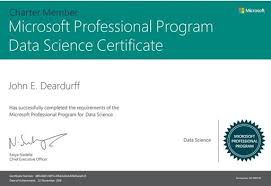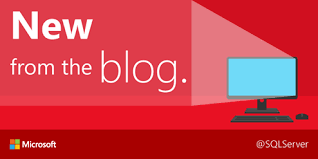Recently at the World Partner Conference in Toronto, Alison Cunardunveiled the Microsoft Professional Degree (MPD) program. Fortunately for myself, over the last three months I have been able to participate in the curriculum preview of Microsoft’s new endeavor as they try to help narrow the skills gap in the computer science industry. (My good friend, Rachel Jones wrote about the computer science skills gap a few months ago.)
One of the nice features of the Microsoft Professional Degree Program is that you can head over to the Data Science Curriculum page on edx.org and take the Data Science Orientation course for free to see if this is a study path that is right for you. If it is than you can continue on to the next course at your own pace. The orientation course is an excellent starting point as this course explains what a Data Scientist is and why you might like to become one. It also starts off with some of the basics of Statistics and using them to analyze data within Excel. Personally the timing of this program worked out perfectly, as literally just the day before I started the program, I had finished a statistics course to complete my Bachelor’s Degree in Network Administration.
If you decide to move forward with the program the next step is a course on Writing Queries with Transact-SQL. I really enjoyed this course as it walked through an entry level knowledge of the Transact-SQL language used in Microsoft SQL Server. Again, personally this was a nice way to begin, because as a Microsoft Certified Trainer (MCT), I teach this material at least once a month. But if you are new to writing SQL, this is an excellent course to start down that road.
The third course is where you have a choice to make between two courses in Analyzing and Visualizing Data. I took the Excel route, however, you could choose the Power BI course instead. This was such a fun course. How have I lived this long using Excel and not known about Slicers and Data Models?
The fourth course started to take me out of my comfort zone as we moved away from a Microsoft course and took a look at Statistical Thinking for Data Science and Analytics from Columbia University. This course starts a deeper dive into Statistics and Probability. My old nemesis Algebra reared its ugly head, but the instructors were able to explain the material very well. Definitely a challenge, but well worth understanding the thinking behind the science.
As we move back to Microsoft courses, we have another choice to make as you will decide which Introductory Data Language course you wish to pursue between R for Data Science or Python for Data Science. Choose wisely, because you will use this language in the next three courses onData Science Essentials, Principles of Machine Learning and then a secondData Science Language course. I myself chose R and really enjoyed learning another programming language. The instructor in the Intro to R course was excellent and I had a fun time working on the exercises and labs. Once I am finished with the Microsoft Professional Degree Program, I plan on coming back and picking up the Python language.
We finally come to another decision between one of three courses. I had originally thought to take either the Applied Machine Learning Scenariosor Implementing Predictive Models, however, I ended up taking theDeveloping Intelligent Apps course. I am so glad I went this route as it helped me tie up some loose ends on Machine Learning and the Web Services section was invaluable for the final project.
Speaking of the final project, the last course is unusual because it is a self-paced project that will have you compete in a data science competition hosted on the Microsoft Cortana Intelligence competition platform. You will have 5 weeks to complete the final project and the final week to submit your best score. Just like all the courses you will need to score at least 70% to pass, but I would suggest trying to get above 80% on the project just in case.
The final project is very challenging and will use everything you learned in your previous courses. The first week was spent analyzing the data and reviewing the two Machine Learning courses. If you have gotten this far in the degree program, don’t give up. Believe me, I was very frustrated and quite exhausted with the final project. Fortunately, earlier on in the program a few of my fellow MCTs and myself had started a study group. While we all worked separately on our classes, we did use the group to keep encouraging each other and basically just share our frustration with certain areas of the course. As my friend Rachel said, “I learned more from the hour in our study group than I did from the entire course! Not only from hearing each other’s different perspectives, but also from all the prep work I did before we met. After all, you never want to look like the slacker!” So a big thanks to all of TeamMCT!
So are you interested in the challenge? Are you excited about learning Data Science and want to be a part of the Big Data future? Then think about joining the Data Science track in the Microsoft Professional DegreeProgram.





Be the first to comment on "Deep Dive into Data Science"